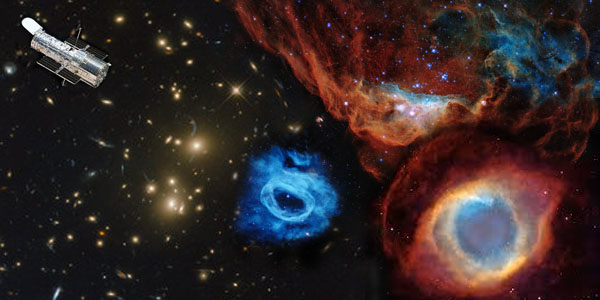Once again, NASA surprises us, this time transforming the image of the Hubble Space Telescope into sound.

Thirty years after the launch of Hubble on April 24, 1990, this iconic instrument continues to study space. Even though within exactly one year (May 2021), they plan to launch its successor, the James Webb Space Telescope, Hubble has exceeded all expectations, and we will hope to it continue to do so for years to come. At least, NASA has planned that the Hubble will continue to operate until the end of the 2020s
Among the incredible images made by Hubble is a photograph taken on August 13, 2018, and because it is composed of numerous galaxies, they called it a “Galactic treasure chest.” When NASA discovered in 2019 that there was a way to produce sound in the soundproofing of space, they decided to take this picture as a canvas on which to work on this unique piece of music.
Considering that galaxies are made up of countless stars; all of them united by the force of gravity, each point that we can observe in this image is one of them, adding up to a total of 41 galaxy clusters, each one containing billions of stars.
The question that comes to mind is, how did NASA transform the image into sound?
Taking into account that there is no sound in space, the scientists decided to divide the image, so that the upper part had a higher frequency and the lower part a lower frequency, thus differentiating each object in the picture. In this way, the different locations and elements of the picture help to produce different sounds. Stars and galaxies are represented with short sounds, while spiral-shaped galaxies have more extended and more complex notes.
Time flows from left to right from 30 to 1000 Hertz, the highest density of galaxies can be observed near the center of the image, in the middle of this cluster we can find RXC J0142.9+4438 are responsible for the mid-tone wave in the middle of the video.
From this experiment, two more images were developed using the same technique. In the “Helix Nebula”, they used color to divide the frequencies. Red corresponds to the highs and blue to the lows, while luminosity was translated as volume variation. This image is also known as “Eye of Sauron” and is 655 light-years away.
The most recent image was created for the celebration of Hubble’s 30th anniversary. NASA used the “Cosmic Reef” image as a canvas.
At NewTec, we had the opportunity to listen to it with the 360° surround sound of our loudspeakers, and we indeed found it quite curious. An image transformed into sound can be a little strange for inexperienced ears but very interesting. What do you think? Could unforgettable pieces of music be created from unforgettable scenes from outer space?, Which one of them did you find stranger?


